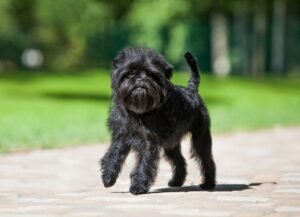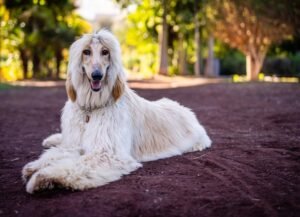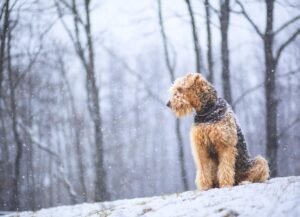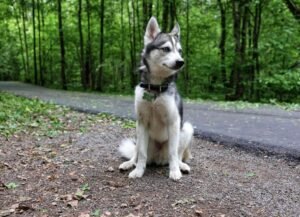The Akita is a dog breed originally found in Japan. After World War II, there were fewer than 50 Akitas remaining in Japan. In response, a determined group of people worked to bring back and preserve the breed. Their efforts proved successful, and now we see the breed in households across the globe.
Akitas were originally bred for big game hunting and protection. and are now used as police dogs in Japan. The breed can range in weight from 70 to 130 pounds—with male Akitas typically heavier than females. Their average height ranges from 24 to 28 inches, so they are considered to be a large-breed dog.
Caring for an Akita
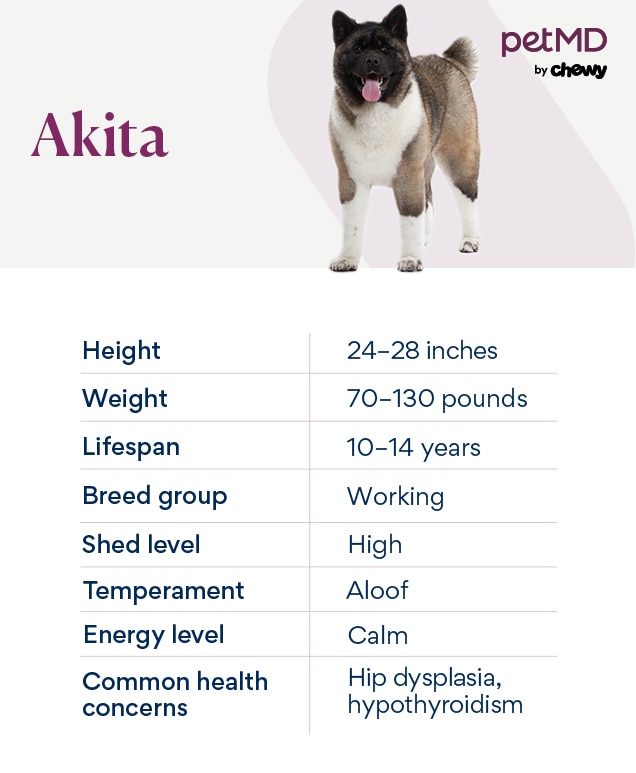
Akitas are known for their plush, curled tails that often differ from dog to dog. Since they are a large breed, it’s important to be conscious of their feeding amounts to ensure they stay at a healthy weight.
Akitas are very strong-willed and require appropriate training and socialization from a young age in order to thrive.
Akitas can be sensitive to heat because of their thick coat, so they would do best in a cooler climate. Akitas can also be predisposed to joint issues—particularly hip and elbow issues—so they should be routinely monitored by their veterinarian.
Akita Health Issues
Typically, the Akita is a healthy and hardy breed, but there are some health issues to keep in mind.
Hip Dysplasia
As a large-breed-dog, Akitas can be prone to hip dysplasia, an orthopedic condition that affects the hip joints and can lead to lameness (limping).
If you are concerned about your Akita’s risk for hip dysplasia, talk with your veterinarian about PennHIP screening. This is a screening method that uses specialized x-rays of the pelvis to detect if a dog is likely to develop hip dysplasia in their lifetime.
If a dog already has or is likely to develop hip dysplasia, it’s very important that they do not become overweight. Your veterinarian will also recommend an appropriate exercise routine, and may suggest general joint support throughout your pet’s life with joint supplements and potentially specialized diets.
If a dog is severely affected by hip dysplasia, your veterinarian may recommend a surgical option to correct this issue and improve your Akita’s mobility and quality of life.
Hypothyroidism
Akitas can also be diagnosed with hypothyroidism, a health condition in which their body does not produce enough thyroid hormone. This condition can be screened for and monitored via routine blood work.
If your dog is diagnosed with hypothyroidism, they will very likely require lifelong medication, specifically an oral thyroid hormone replacement.
What to Feed an Akita
Akitas do well on a large-breed dog food. This is particularly important when they are puppies as a large-breed-specific puppy diet will ensure that they do not grow too fast and potentially cause orthopedic issues.
An AAFCO (Association of American Feed Control Officials)-approved food is a great option because it means that the food meets the standard nutritional requirements and regulations for pet foods.
How to Feed an Akita
Akitas can be fed similarly to any other large-breed dog. Two to three meals spaced throughout the day would suit them well.
Individual dogs may eat quicker than others, so if your dog is eating too fast, this is something to discuss with your veterinarian. Specific types of dog bowls and feeders are specially made to help dogs eat at a slower pace—these typically come in the form of spiral bowls, puzzle toys, or texturized feeding mats.
How Much You Should Feed an Akita
Determining the right amount of food for an Akita will in part be decided by the type of food you choose and your veterinarian’s recommendation. Since Akitas are prone to hip and joint issues, keeping them at a healthy weight through appropriate meal portions is very important.
If you feel like your Akita is gaining too much weight, be sure to talk with your veterinarian to figure out an appropriate weight management plan.
Nutritional Tips for an Akita
Akitas can benefit from joint support throughout their lives to help maintain their joint health and mobility. Your veterinarian can provide you with recommendations about the best products, as there are varying levels of joint supplements that can cater to your Akita’s age and current joint situation.
Akita Grooming Guide
The Akita is a fairly heavy shedding breed, so you should be prepared for routine grooming.
Skin Care
Akitas do not have any unique skin attributes or sensitivities
Coat Care
Akitas have a thick double coat that sheds seasonally and requires frequent brushing. The frequency of brushing will increase about twice a year as they are shedding.
Akitas normally require frequent brushing, one or more times each week, as well as regular baths.
Eye Care
It is important to make sure your Akita’s eyes are clean and free of discharge.
Also, if an Akita is diagnosed with hypothyroidism, it can cause decreased tear production, so be sure to talk with your veterinarian to see if eye drops will be needed.
Ear Care
Akitas can also benefit from occasional ear cleanings to prevent buildup of wax in the outer ears.
Akita FAQs
Is an Akita a good family dog?
An Akita can do well in the right family environment. They are very protective and have a prey drive, so they should be watched closely around children and small animals.
An Akita may eventually become very protective of their family members (including children), so it’s important to properly socialize them from an early age and constantly work on their training.
Are Akitas smart dogs?
Yes, Akitas can be very smart.
What are the drawbacks of an Akita?
Akitas tend to do best as the only dog or one of a pair. They are typically protective of their territory and can be aggressive toward other dogs or animals. Socialization is essential for them early on, so that they learn they do not need to protect against all unfamiliar people.
How much does an Akita cost?
An Akita can cost anywhere between $500 and $2,000 on average.
What type of Akita dogs are there?
There are two types of Akita dogs. The American Akita and the Japanese Akita (Akita Inu).
Should Akitas be outside dogs?
No, Akitas do not do well as primarily outside dogs. They often enjoy playing outside with their family, but they should not be left outside for long periods.
They are sensitive to heat, so being left outside can lead to heat-related issues such as dehydration or heatstroke.
Featured Image: iStock.com/Eduard_Mikrykov

